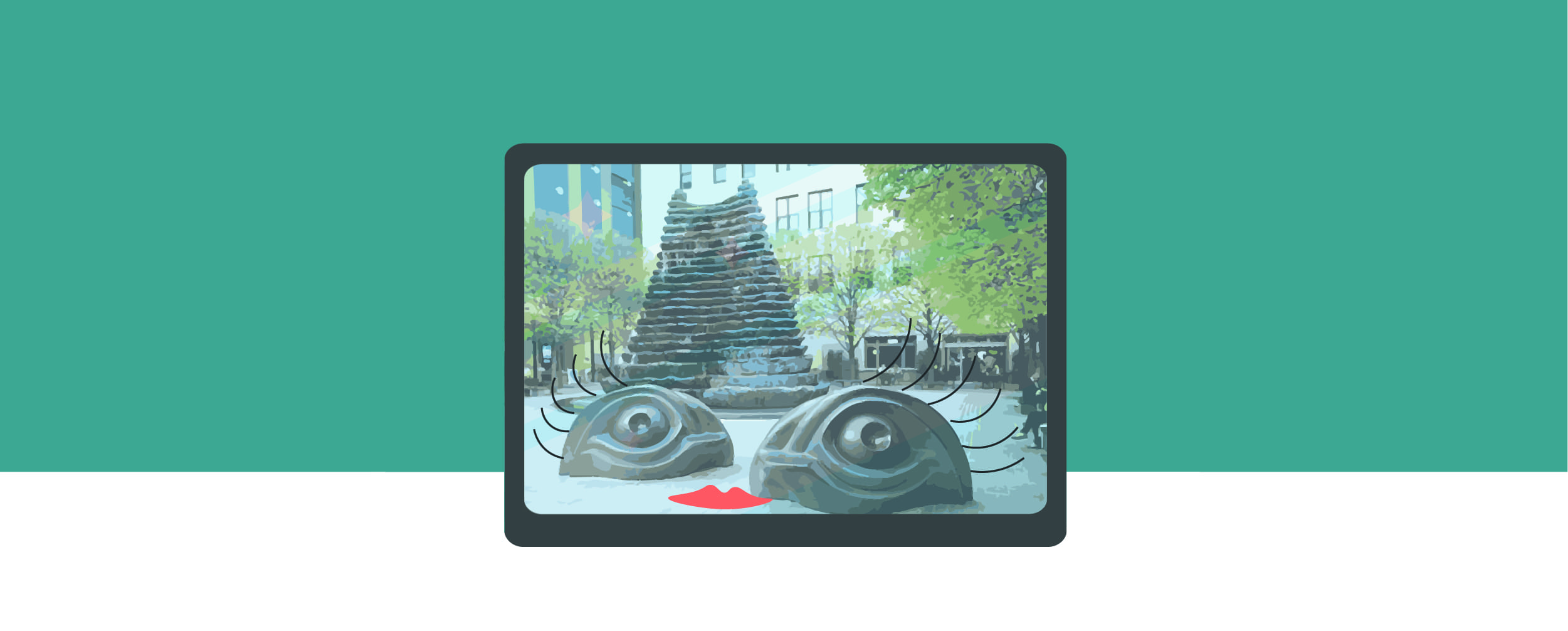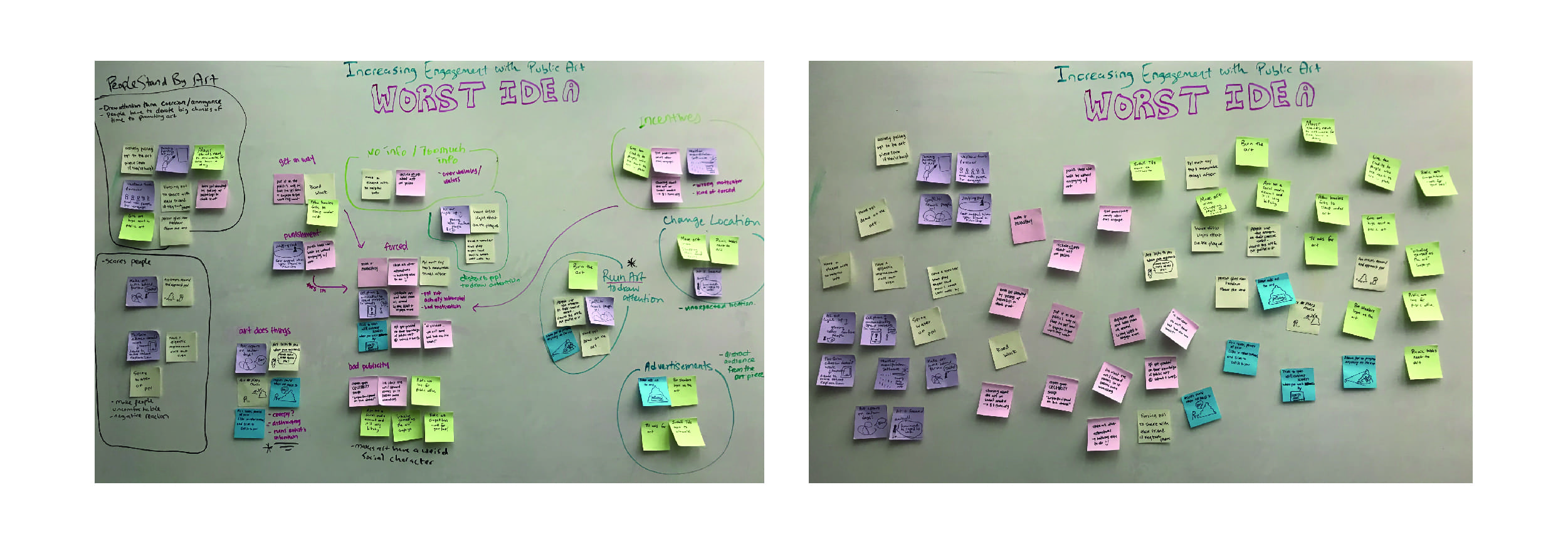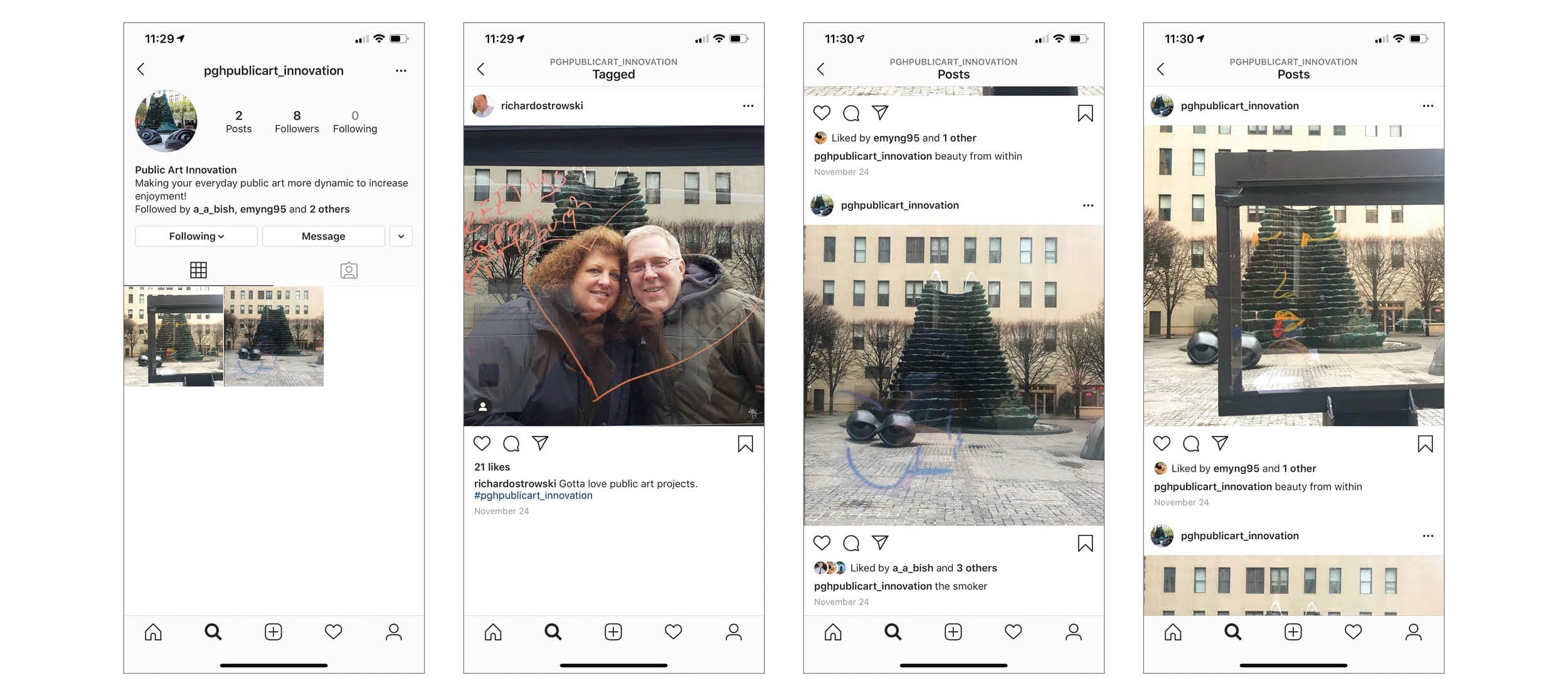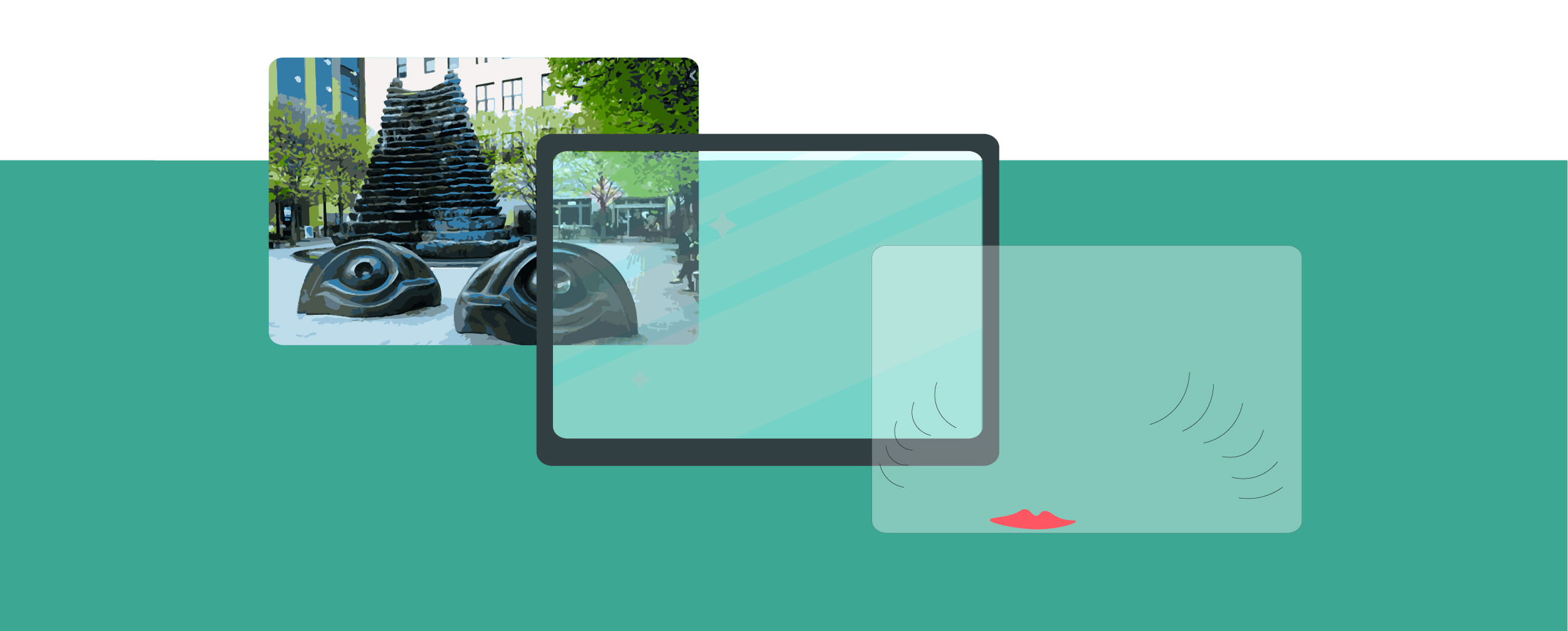My team and I wanted to explore the idea of what engagement with public art in Pittsburgh means to its residents. We noticed that the dialogue between the public art installation and the viewer is one-way and because public art tends to be static, installations cease to retain the interest and attention of residents and offer few opportunities for self-expression and connection.
So we asked ourselves:
How might we increase engagement around public art by creating a more dynamic and expressive experience for residents?







